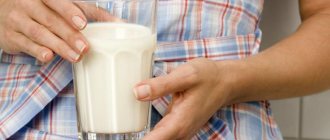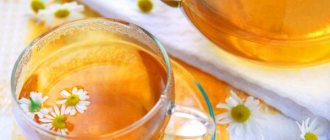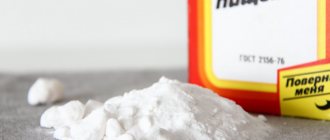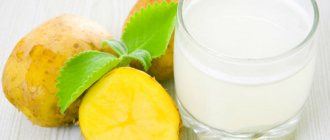Is kefir allowed for acute pancreatitis?
All fermented milk products are strictly contraindicated during the period of exacerbation from the first to the tenth day.
In the first days of exacerbation of pancreatitis, only purified or mineral water without gases can be consumed from drinks. It is also contraindicated in patients with cholecystitis. When the acute phase has passed, you can take less than a quarter glass (low-fat) and monitor the body's reaction.
In general, for patients, kefir is drunk in accordance with the daily intake of 200 ml. How to gradually return to this norm? This occurs by doubling the dose at regular intervals. We start with 50 ml per day. After 3 - 5 days, increase to 100 ml and so on.
Kefir and chronic disease
Is it possible to use kefir for chronic pancreatitis? That's possible too. If the patient feels great, then it is allowed to introduce such fermented milk with a fat content of 2.5% into the diet. The best option is a product that is no more than a day old, because further the amount of ethyl alcohol in it will increase.
Despite the fact that there is a stable remission, patients are not allowed to drink more than 200 ml per day, since the highest volume can lead to acidification of the stomach contents, irritation of its mucous membrane, the occurrence of fermentation processes, the formation of gases and a deterioration in the general condition.
Patients with the chronic form can eat kefir as a separate dish, but also add it to some side dishes. It can be mixed with one teaspoon of sunflower or olive oil, sweeteners.
The modern food market offers many kefir derivatives - biokefir, bifidok, bifilife and others. They are fermented according to the standard form, but additionally, microorganisms beneficial to the intestines, for example, bifidobacteria, are added to them. If they do not contain fruit or berry fillers, then patients with pancreatitis are allowed to use them in food.
Diet recipes for pancreatitis and cholecystitis
For those who are forced to follow a diet for cholecystitis and pancreatitis, the question often arises: what can be prepared from the set of products that are allowed for this pathology? Believe me, there are many such dishes, just turn on your culinary imagination and act!
Let us give you examples of some of these dishes.
- Vegetable soup with cheese meatballs
You will need: 2 ½ liters of water (or vegetable broth), one bell pepper, carrots, medium onion, 5 potatoes, 100 g of mild cheese (Dutch can be used), one egg, 100 g of flour, herbs, a little butter and salt.
Grate the cheese, add a little softened butter, flour, egg, some herbs and salt. Mix and place in the refrigerator for half an hour.
Meanwhile, grate the carrots coarsely, cut the bell pepper into strips, and cut the onion and potatoes into cubes. Place everything in boiling water and boil for about 15 minutes.
While the soup is cooking, roll the cheese mixture into small balls (the size of peanuts), add them to the pan with the soup, stir and cook for up to 15 minutes. Salt the soup and add spices as desired. When serving, sprinkle with herbs.
- Potato cutlets with sausage
You will need: about seven medium potatoes, one onion, herbs, 200 g of hard cheese, 250 g of milk sausage, 3 eggs, 3 tablespoons of flour, sour cream.
Boil the potatoes, cool and grate them. Add finely chopped sausage and grated cheese. Add raw eggs, chopped herbs and onions, 2 tablespoons of flour, salt. We form cutlets, bread them in flour and cook in a double boiler. Serve with sour cream.
- Potato omelet from a steamer
We will need: 200 g of boiled potatoes, four eggs, 100 ml of milk, spices and herbs. You can add 50 g of hard cheese.
Grate the potatoes. Separately whisk eggs, milk, salt and spices.
Line the bowl in a double boiler with cling film and place the first layer of potatoes, pour the egg beaten with milk on top. The omelette can be sprinkled with grated cheese and herbs. Cooking time is from 20 to 30 minutes.
- Pumpkin dessert
We will need: pumpkin pieces, cinnamon and sugar.
Place the pumpkin cut into squares in a double boiler and sprinkle with sugar and cinnamon. Cooking time 20 minutes.
- Vegetable pilaf
You will need: a glass of rice, an onion, a zucchini, two medium carrots, an eggplant, a tomato, spices and herbs.
Cut the vegetables into small cubes (pre-cut the skin from the eggplant), grate the carrots. Simmer in a saucepan with a small amount of vegetable oil. Add raw rice, mix everything and add salted water. The liquid should cover the rice by 2-3 cm. Cover with a lid, bring to a boil and cook, opening the lid infrequently and without stirring, until the rice is cooked. Serve sprinkled with herbs.
Experts recommend that people who have suffered from inflammatory diseases of the digestive system try to adhere to this diet. Even if you have recovered and returned to your normal diet, do not abuse those foods that were prohibited, especially smoked meats and marinades, alcoholic beverages and excessively fatty foods. If you ignore these recommendations, the gallbladder and pancreas may become overloaded again, and the disease will recur.
Milk curdling by-product and sour cream
Whey is a biologically valuable concentrate containing many vitamins: A, D, group B. However, it contains a significant amount of lactose, which worsens the patient’s condition. The patient experiences the following symptoms:
- flatulence;
- abdominal pain;
- nausea;
- diarrhea.
In the acute period of pancreatitis, nutrition should be based on the principle of excluding products that worsen the patient’s condition, therefore, feeding with homemade whey is not recommended.
During the period of remission, it is allowed to use it as an independent drink.
Serum for pancreatitis is introduced into the patient’s diet very carefully.
It is recommended to drink the drink starting from 50 ml during breakfast.
Sour cream for pancreatitis, along with low-fat kefir, can be used in small quantities, but only after consulting a doctor. In the acute period of the disease, the product is completely excluded from the diet.
For pancreatitis, you can add sour cream to prepared dishes if the disease is in clinical remission. Start using the product with 1 tbsp. l. 1 per day. It is undesirable to include sour cream in the diet of patients suffering from intestinal dysbiosis for pancreatitis. With stable remission, you can eat a product with a fat content of no more than 10-15%.
Rules of use
If the gland is inflamed in the acute stage, doctors recommend avoiding fermented milk products. Why? The fact is that at this moment the patient’s acidity, directly from the gastric juice, increases. If you drink kefir during the acute stage of pancreatitis, there will be a failure in the production of pancreatic enzymes, thereby worsening the patient’s general condition.
Kefir for pancreatitis is not always beneficial for a person, especially given the nature of the exacerbation.
Some doctors may allow you to drink kefir during an exacerbation of the disease, it all depends on the general condition of the patient. As soon as the attack of pain stops, you are allowed to drink a small amount of the drink. The dosage should not exceed more than 50 ml per day.
If the patient does not experience pain and the condition does not worsen, then the dosage of drinking the drink is gradually increased by 10-15 ml, thus reaching 1 glass per day.
Recommendations from Elena Malysheva in the special issue “Live Healthy!” on how to overcome pacreatitis using the healing effects of natural remedies.
For chronic pancreatitis, start drinking a 1% fermented milk drink. Recommended dosage: 1/4 cup once a day. If the condition does not worsen within two days, then you can gradually increase the dosage to 1-2 glasses per day.
When the gland is inflamed, you should drink the drink only at room temperature. If you drink cold kefir, there is a risk of spasm in the pancreatic ducts.
Standard rules for increasing dosage:
- Drink 50 ml.
- After a couple of days, increase the dosage to 150 ml, and divide the dose into 3 doses.
- In case of stable remission, the dosage can be up to 2 glasses per day.
If the condition worsens at the first step, then you need to stop taking it and consult a doctor.
Many patients ask whether it is possible to drink a drink before bed? Doctors disagreed, so there is no exact answer to this question. This product is rich in carbohydrate compounds, dietary fiber and protein, so it quickly stimulates intestinal motility, satisfies hunger and restores microflora and gland function.
If in the evening after taking it there is no discomfort, then the drink can be drunk, but only in small quantities.
How to make kefir at home
Recipe for making homemade kefir (1 l):
- Reheat whole or pasteurized (900g) until warm but not too hot.
- Add 100 g of kefir to the milk, homemade is better, but for the first time you can use store-bought kefir (without additives!) and sugar. Mix.
- Cover the container with the drink with a thick cloth (to protect it from light) and place it in a warm place to speed up fermentation.
- After 24 hours the product is ready for use. Before drinking, stir thoroughly.
- It is recommended to drink the prepared kefir on the same day.
- Leave 100 ml for the next starter. Store the product in the refrigerator.
Thus, according to experts, the benefits of kefir for the normal functioning of the pancreas are obvious.
»>
Bibliography
- Sokolovsky V.P. Milk and health. M. Medicine 1981
- Special editor Inikhov G.S. Dairy food. M.: Food industry 1979
- Dudenkov A.Ya. Biochemistry of milk and dairy products. Food industry Moscow 2010 pp. 81–87.
- Onopriyko AB Production of dairy products. Practical guide. M. ICC Mart Rostov-on-Don 2011
- Okhrimenko O.V. Biochemistry of milk and dairy products. Research methods. Tutorial. Vologda State Medical Academy. 2011
- Petrovskaya V.A. Dairy business. M. Kolos 2010
How to make kefir yourself?
This delicious fermented milk product can be made at home. In this case, you can be confident in the taste and benefits. To do this you will need a specially purchased lactic acid mushroom. It will be used as a starter. When purchasing, it is important to pay attention to the inscription, which indicates the production of the product from kefir mushrooms. To get 1 liter of drink you need:
- 900 ml milk;
- 2 tbsp. l. Sahara;
- 100 ml of starter.
Boil the milk, cool to room temperature, put sugar in it, add the starter. Place in a warm place for a day. That's all, homemade kefir is ready. Next time you can use a ready-made drink instead of sourdough.
Using kefir during remission
Even in the remission stage of such a pancreatic disease, treatment consists of a strict and proper diet. Therefore, consuming kefir in excess of the norm per day is contraindicated. But there is good news - at this stage you can drink a product that is not completely fat-free. The product can have a maximum fat content of 2.5%. Buckwheat in this case will also be useful if you prepare it according to the recipe described above.
What diet should adults follow with acute pancreatitis?
If, despite warnings, you consume kefir more than normal, this can damage the mucous membrane and lead to irritation, cause oxidation, affect the development of the fermentation process, and thus worsen the condition due to malfunction of the pancreas.
If pancreatitis is in long-term remission, kefir can be made into an individual dish, that is, drink it not only before bed, but also season chopped fruits and vegetables with it, in some cases you can also season boiled vermicelli.
Contraindications for pancreatitis in the use of kefir
There are no contraindications for consuming kefir or fermented milk products for pancreatitis, chronic or acute. The properties of dairy products can improve metabolism and the acidity of the digestive system. There are a number of known beneficial effects on the pancreas, which receives stimulation for normal functioning.
The only contraindication is excessive consumption of fermented milk products, which leads to digestive disorders. In the future, this will affect the pancreas, leading to exacerbations of certain diseases. Pancreatitis with digestive disorders can worsen. Kefir is a healthy product for humans; you should not abuse the drink.
How to use
To protect against pathogenic microorganisms, kefir is drunk regularly. The fungus Candida albicans is not the only representative that drink probiotics control in the human body. Because of the enzymes and “good” bacteria, fermented milk is effective in treating inflammation of the pancreas. In the remission stage of pancreatitis, the portions of the drink increase every 3-5 days: 50-100-150-200 ml. They move on to the next dose if there are no manifestations of pancreatitis within several days after taking the low-fat or 1% drink.
Kefir for the night
The main qualities of kefir are associated with antibiotic properties and stimulation of metabolic processes. Nutritionists recommend choosing a “kefir day” during the week and not eating anything else. This solves two problems at once: weight correction and gentle cleansing of the body.
Kefir is considered the best antidepressant among dairy products, therefore it is present in many diets and taken at night as a sedative.
Kefir is considered the best antidepressant among dairy products, therefore it is present in many diets and taken at night as a sedative. The low-fat or 1% product is warmed to room temperature. A glass of the drink is drunk in small sips 40-60 minutes before bedtime.
Buckwheat with kefir
Nutritionists recognize that buckwheat and kefir help reduce weight, cleanse the body of toxins, and restore the balance of vitamins and minerals. The combination of the benefits of kefir and buckwheat treats diseases of the gastrointestinal tract, liver, helps with anemia, hypertension, and diabetes.
The recipe is simple. Boil one glass of pre-dried buckwheat. Then the water is drained. Cover the pan with a lid, wrap it in a towel and leave overnight without adding salt, oil or sugar. The porridge should be dry and crumbly.
The diet does not regulate the intake of buckwheat.
Nutritionists recognize that buckwheat and kefir help reduce weight, cleanse the body of toxins, and restore the balance of vitamins and minerals.
They eat porridge as much as they want, and when they want. But they drink no more than a liter of kefir per day, taking it half an hour before or after meals. Doctors should prescribe such a diet for pancreatitis, because rapid weight loss negatively affects the pancreas.
Kefir with cottage cheese for pancreatitis
Cottage cheese, rich in vitamins and microelements, like kefir, is introduced into the diet in the stage of stable remission. Cottage cheese and kefir together resist inflammation, increase immunity, and reduce the likelihood of complications. Only low-fat cottage cheese is used (no more than 3%) with an acidity no higher than 170° on the Turner scale.
The cottage cheese is pureed and served as a steam pudding or casserole. Kefir is added to the dish instead of sour cream or drunk. For patients with calcium deficiency, calcined cottage cheese is recommended, which is made at home by adding calcium chloride to low-fat milk. In the absence of symptoms of pancreatitis, the fat content of cottage cheese in the diet is increased to 5-9%.
Prescriptions for patients
As already mentioned, kefir can be added to various salads and side dishes that can be eaten with pancreatitis. Most often people use this buckwheat recipe with this fermented milk product.
This is not just a dish, but a traditional medicine that doctors will not focus their attention on. But patients themselves often use it and observe positive dynamics.
You need to prepare it before going to bed.
- To do this, you will need to take a glass of buckwheat, pour kefir into it, and leave it overnight.
- In the morning and 60 minutes before bedtime, you should eat half a glass.
- One course should last 2 weeks, after which a pause must be taken.
- The dish should not be left in the refrigerator; it must be consumed warm.
- Otherwise, not only will treatment of the disease fail to produce results, but the patient’s condition will even worsen.
- If treatment is carried out in the summer, then you need to bring the product to room temperature.
Chicken salad is also often used by patients. It is a good dietary food that is excellent for patients with chronic pancreatitis.
- To prepare it, you will need to take 100 g of boiled chicken breast, 100 g of cheese and a tablespoon of dill.
- The meat must be chopped, poured with kefir, salted a little, and mixed.
This dish is an irreplaceable source of protein necessary for the normal functioning of the pancreas. In addition, it is perfectly absorbed by the body. At the same time, the dill contained in the dish can improve the condition of the diseased organ.
Thus, answering the question whether it is possible to eat kefir with pancreatitis, one should definitely say that it is possible! Only in this case it is necessary to follow all the doctor’s recommendations.
source
Features of the disease
Cholecystitis is an inflammatory disease in the gallbladder. With this disease, there is stagnation of bile in the ducts, which disrupts the process of digestion and absorption of fats. Most often, cholecystitis is accompanied by pancreatitis. These two diseases have common causes:
- inactive lifestyle;
- poor nutrition.
First of all, a diet is prescribed with the restriction of certain foods and split meals.
Fermented milk products are allowed and essential for cholecystitis. Kefir is especially useful.
For diseases of the biliary tract and gallbladder, nutrition should be softening. First, doctors recommend drinking a lot of fluids, and then introducing kefir.
During inflammatory processes in the gallbladder and its ducts, the work of other digestive organs is disrupted, metabolism is inhibited, and the process of chronic intoxication of the entire body begins, which will gradually affect vital organs. Inflammation can also develop in the liver.
Kefir copes well with high cholesterol levels, so it is recommended to use it for cholecystitis. It is recommended to drink 1 glass of fresh warm drink at night.
Return to contents
How to choose?
When choosing kefir for pancreatitis, you should give preference to products with a minimum shelf life and low fat content.
The drink with the prefix “bio” in the name has the best healing properties.
Biokefir contains beneficial probiotic bacteria (bacillus acidophilus, lacto- and bifidobacteria), which inhibit the growth of pathogenic microflora.
The prebiotics contained in kefir, or carbohydrate compounds (lactulose, dietary fiber, inulin), are able to pass from the stomach unchanged into the intestines, where they exert their healing effects.
Patients with pancreatitis should consume kefir:
- homogeneous consistency;
- fat content not higher than 1%;
- fresh, but no more than 1-3 days ago;
The most popular brands: “BioMax”, “Vkusnoteevo”, “House in the Village”, “36 kopecks”.
Use during the acute stage of the disease
The acute form of pancreatitis manifests itself as a severe painful attack. The patient cannot straighten up from the pain, sometimes the body temperature rises, vomiting, diarrhea or constipation occurs. With such pain that occurs during the acute phase of pancreatitis, all the patient wants is to call an ambulance and take a painkiller.
The acute form is treated in a hospital, sometimes even surgical intervention is required. Therefore, it is clear that no one thinks about kefir in this state. Moreover, it is categorically contraindicated in this case. In the acute phase of the disease, treatment of pancreatitis involves starvation. Only later, after a couple of days, can you take liquid food in the form of decoctions, jelly and other products that are given in the hospital. Treatment with kefir is allowed much later, after about 10 days.
When the patient's condition becomes stable, he can safely take liquid and steamed food, and he is allowed to consume kefir.
The rules for treating with kefir are strict and must be strictly followed so as not to harm yourself. You can only drink a low-fat or 1% drink that was prepared no later than 24 hours ago. Initially, the portion should be no more than 50 ml. If the patient tolerates the product well, the volume is increased by another 10 ml. So, gradually increasing the volume, you can take up to 200 ml per day.
The temperature should be a little warm. You should not treat with a cold drink, as it can be harmful. For any gastrointestinal diseases, drinks should be consumed warm. The digestive system does not like hot or cold food; this disrupts overall homeostasis and causes additional stress, which is not at all necessary in a state of illness.
It is useful to take the drink before bed, an hour before bedtime. You can only have kefir for dinner. Such a light dinner will relieve the feeling of hunger.
In addition, calcium, as it turns out, is best absorbed at night, and the best supplier of this element is kefir, which is even more beneficial than milk.
The benefits of taking kefir before bed
Can kefir be used for bedtime for pancreatitis? It's definitely possible. A fermented milk product drunk before bed helps normalize the digestion process and relieves headaches. In addition, calcium is absorbed best at night.
Kefir is an excellent antidepressant. Therefore, doctors recommend using kefir as a sedative.
Is it possible to drink kefir for pancreatitis and what kind? Choose low-fat fermented milk product. Be sure to heat it to 20 degrees before use. It is best to drink kefir in small sips an hour before bedtime.
Under such conditions, sweet and restful sleep will be guaranteed. And this is very important for a speedy recovery.
Variety of fermented milk drinks
Kefir, fermented baked milk, yogurt, Varenets, and katyk are deservedly popular. When treating the pancreas, they have a beneficial effect, quench thirst, stimulate appetite, increase the secretion of gastric juice, and restore damaged cells of the diseased organ.
What foods are included in the patient’s diet depends on the characteristics of the disease. Lactic acid mixtures have a pleasant sweet and sour taste, low acidity, and pleasant consistency.
The patient needs proper nutrition, starting from the early period of the disease.
Fermented milk products for pancreatitis in the acute stage are consumed in small quantities. The patient is allowed to include in the diet:
- low-fat pureed cottage cheese;
- daily 1% kefir.
After 2 weeks, as the inflammatory process decreases, the following products are introduced into the diet:
- yogurt 1.5%;
- fermented baked milk 2.5%;
- curdled milk.
The patient can drink fermented milk mixtures that do not contain sugar, berry fillers, starch, thickeners, stabilizers. Fresh and high-quality products are recommended for the patient’s nutrition. Carbonated sour drinks are strictly prohibited.
Calorie content of kefir
This indicator depends on the composition and fat content. It ranges from 30-55 Kcal per 100 grams. Is it possible to have kefir of this calorie content for pancreatitis? The product is a low-fat (30 Kcal) and one percent drink containing 40 Kcal.
2.5% and 53 Kcal are allowed when pancreatitis ceases to be chronic, the acute period goes into remission, and the symptoms of a chronic disease disappear. And fat content of 3.2% (56 kcal) is strictly prohibited.
Nutrient content per 100 grams of product
If there are no other contraindications, kefir is allowed for pancreatitis: it contains enough essential substances: proteins, carbohydrates, fats, calcium, B vitamins, iron, potassium. You can drink kefir with the following nutrient content:
calorie content of kefir
- B1 - 0.3 mg,
- Fe - 6.9 mg,
- B2 - 2.19 mg,
- Ca - 9 mg,
- Fats - 0.05 g,
- C - 33 mg,
- Proteins - 3 g,
- Carbohydrates - 3.8 g
Note that the digestibility of calcium contained in kefir is better than that found in milk.
Recipes for medicinal dishes with kefir
The combination of kefir and certain products gives a good therapeutic effect in the treatment of pancreatitis. Below are the most popular recipes.
Buckwheat with kefir
A glass of purified buckwheat is poured with kefir in an amount of 250 ml and left overnight. Half of the finished dish is eaten in the first half, and the second part is consumed immediately before bed. This technique helps to normalize the functioning of the digestive system and significantly improves the general condition of the patient.
Salad with chicken and kefir
To prepare the salad you need the following ingredients:
- Boiled chicken breast 100 grams;
- Adyghe cheese 100 grams;
- Greens to taste;
- Kefir for dressing 150 ml.
All of the above ingredients must be cut into cubes and placed in a deep bowl. Then add herbs to taste, a small amount of salt and season the salad with kefir. Serve the finished dish as a snack for lunch or dinner.
The composition of the salad is beneficial for the body and does not cause excessive stress on the pancreas, which is important when following a therapeutic diet during an exacerbation of pancreatitis or during long-term remission. . Dessert made from kefir and fresh berries
Dessert made from kefir and fresh berries
This recipe can be used during a long-term stage of remission, since fresh berries can cause excessive production of pancreatic enzymes. To prepare, just mix low-fat kefir with fresh raspberries, currants or a sweet berry of your choice. This dessert is ideal for breakfast or dinner.
Buckwheat with kefir in the morning on an empty stomach
For pancreatitis, doctors strongly recommend cooking buckwheat with kefir. The dish helps restore the functioning of the gland, as well as normalize the general condition of the patient.
Buckwheat with kefir is one of the popular folk recipes for restoring, or “cleansing” the pancreas.
In chronic cases of the disease and in remission, it is necessary to take the dish for 10-14 days; if necessary, the course is extended, but at the same time you need to take a short break.
Cooking rules
- 1/2 cup buckwheat,
- and also about 250 ml of kefir, it is better to buy a low-fat product.
Before pouring the fermented milk product, the buckwheat should be rinsed well under running warm water. Place in a deep plate and pour in the drink.
Kefir and buckwheat for pancreatitis is a simple and affordable recipe for a dish with cereal, which is approved for use by doctors when diagnosing problems with the gastrointestinal tract and pancreas.
Infuse the porridge in a cool place for 10 hours (put in the refrigerator). Then, take out the dish and leave for an additional 1 hour at room temperature with the lid closed. For quick infusion, you can put buckwheat in a water bath.
Important! Since buckwheat can cause severe irritation to the gastrointestinal tract, it is necessary to prepare small portions first.
Now you know that kefir for pancreatitis is not only possible, but also necessary to be consumed. The most important thing is to know during what course of the disease you should drink, and in what dosage. Remember, if discomfort, heaviness in the stomach or pain occurs after consumption, you must refuse the drink and choose another healthy option.
For pancreatitis, the diet is quite extensive, so every patient can find a suitable dish and drink for themselves.
source
How to use kefir
In order for kefir to have a healing effect and not cause harm, you need to take into account several rules and follow them. .
For pancreatitis, you need to start drinking kefir with a fat content of 1%
Here's how to use this product for those experiencing pancreatitis:
- It is better to start enriching your diet with 1% kefir or completely low-fat. If it is too fatty or sour, it can lead to increased secretion of the digestive organs.
- In the first time after attacks, it is better to use small portions (a quarter of a glass). If signs of recovery are obvious and stable, then you can increase the daily amount of the product to 1 glass. But this needs to be done gradually.
- The temperature of this fermented milk drink should be at room temperature. If you drink it cold, there is a risk of spasms of the pancreatic ducts. An increase in temperature is also unacceptable, since thermal denaturation of the protein will eventually occur.
- A condition in which kefir cannot be used is pancreatitis, which is accompanied by diarrhea, i.e. loosening of the stool. The fact is that this fermented milk product has a laxative effect, and with such symptoms, this property will only complicate the situation.
Both cold and too warm kefir can cause harm to those who have problems with the pancreas
- Another rule: you need the kefir to be weak. This means that its maturation period should not exceed 24 hours. The longer this product sits, the more sour it will be.
Advice. When buying kefir, you need to pay attention to its appearance: lumps, flakes, and uneven consistency are a sign of expiration, improper storage conditions, or a violation of production technology.
How is kefir useful for a patient?
This fermented milk product contains lacto- and bifidobacteria, which prevent the proliferation of pathogenic bacteria in the body and normalize the intestinal microflora. The protein in its composition is easily absorbed by the body, so kefir drink serves as the main source of nutrition for patients on a protein diet.
The drink contains essential vitamins and microelements. Regular use helps improve immunity.
Nutrition during remission
Is it possible to drink goat's milk, which is not inferior in its chemical composition to cow's milk and has a large amount of highly dispersed proteins, is a controversial question. It contains vitamins A, D, cobalt salts.
Drinking goat's milk during the acute phase of the disease is not allowed. We recommend pureed porridge diluted with water in a 1:1 ratio on the 4th day after the attack. You can find out what dishes are prepared with goat milk from a nutritionist.
The pancreas needs gentle nutrition, so the patient is recommended the following dishes:
- puddings;
- souffle;
- casseroles;
- omelette;
- milk soups.
Is it possible to treat goat's milk for pancreatitis if you introduce it into the diet during the period of clinical remission, taking into account all the beneficial properties? The drink starts with a small dose - 50 g or ¼ glass of milk, diluted with boiled water in a 1:1 ratio. It is recommended to mix goat milk with other products. In this form it is well absorbed. When compiling a diet, you should correctly distribute dairy products and their calorie content throughout the day.
Dishes based on goat's milk are given in the first half of the day.
When treating the pancreas, it is necessary to analyze the sensations that arise after taking the drink. If your general condition worsens, it is recommended to exclude it from the diet. Treatment is carried out under the supervision of a doctor; products that the patient used to prepare dishes before the exacerbation of pancreatitis are gradually introduced into the menu.
The expansion of the diet is carried out carefully and gradually.
Proper nutrition includes the rational use of dairy products for pancreatitis.
Is it possible or not to drink goat's milk if you have pancreatitis?
Goat's milk (GO) contains the maximum amount of useful components and is characterized by low fat content. This product is dietary and is recommended for use by patients eating an adjusted diet. Goat's milk can be included in the menu for pancreatitis, but subject to a number of rules.
Improper use of the product can cause problems with the digestive system.
Features of using the product for pancreatitis:
- mandatory boiling (raw CM is more difficult for the digestive system to digest, additional stress on the gastrointestinal tract during pancreatitis should be excluded);
- the product has antibacterial properties; if you consume milk on an empty stomach, you can create additional protection for the digestive system from pathogenic microorganisms;
- if the patient has not previously consumed CM, then it should be introduced into the diet in a diluted form (in a ratio of 1:2 or 1:1 with water);
- Goat milk can only be consumed warm;
- to determine the reaction of the digestive tract to a product, it is recommended to introduce it into the menu with minimal portions (50 ml each);
- the daily portion of CM should not exceed 200 ml (the optimal option is 100 ml).
Video on the topic: Goat milk - beneficial properties.
Diet for pancreatitis, cholecystitis and gastritis
When prescribing one type of nutrition or another, a nutritionist must always take into account other concomitant diseases that occur against the background of the underlying pathology. Gastritis, which occurs against the background of inflammation of the gallbladder and pancreas, requires a review of dietary nutrition with an emphasis on the degree of acidity of gastric juice.
Features of the diet for pancreatitis, cholecystitis and gastritis may be applicable to other diseases of the digestive tract. This includes small and moderate meals, the absence of long intervals between meals, adherence to a daily nutritional routine (regime)
It is important to avoid overeating, eating on the run and dry food, not drinking alcohol and not smoking, since tobacco smoke and tars swallowed with saliva also negatively affect the composition of gastric juice and irritate the walls of the stomach.
The simultaneous course of inflammatory processes in the pancreas, stomach and gall bladder is a forced signal from your body, indicating major problems and nutritional disorders that cannot be ignored. If you don't start watching what and how you eat, there may be no hope of recovery.
Dietary recommendations must be followed during drug therapy prescribed by the therapist. Only complex treatment will maximize the speed of recovery of damaged organs and prevent the re-development of the inflammatory process. By the way, to prevent relapse, you will have to follow the rules of proper nutrition for as long as possible.
The benefits and harms of kefir
There are many opinions about the benefits and harms of kefir for this disease. Some believe that it is forbidden to use it and this can lead to various complications. Some believe otherwise, that by consuming kefir you can normalize the functioning of the body.
To draw any conclusions, you need to analyze it from different angles:
- Chemical analysis. The indicators after it confirm that people suffering from this disease drink kefir with a small percentage of fat content and low acidity.
- Thermal analysis. This analysis indicates what temperature regime to use for consuming kefir. When the temperature is higher than normal, this will cause the kefir to curdle, forming a porridge. At the same time, it is prohibited in cold form.
- Mechanical analysis. This type of analysis allows us to consider the effect of kefir on the factor of irritation of the gastrointestinal mucous membranes. According to this scale of suitability for use, kefir is ideal because it is characterized by a liquid consistency and does not provoke irritation of microflora.
Considering the above, it can be argued that the use of kefir during pancreatitis has a beneficial effect on the body and it must be included in the diet of patients.
Kefir for acute pancreatitis
Is it possible to drink kefir with acute pancreatitis? First, the drink is completely removed; the first days are characterized by a period of fasting. The patient is given only non-carbonated mineral or pure water. Medicines for the pancreas are used as prescribed by a doctor.
»>
Then the gradual appearance of kefir in the patient’s menu is allowed. This happens only on the 10th day. It is introduced gradually: at first, only ¼ glass is offered with zero fat content. The further course of the disease is always monitored. If a stable condition occurs, the patient leaves the acute stage and tolerates the product well, its daily amount is increased day by day, adding 10 ml to the initial dose. This happens until the dose is equal to a glass.
Contraindications
Despite the huge list of advantages of this product, there are some contraindications to its use. When answering the question whether it is possible to drink kefir for pancreatitis, it is recommended to consider the negative aspects that drinking the drink can cause. So, contraindications:
- gastritis with high acidity;
- liver and kidney diseases (some);
- individual intolerance to dairy products or allergies to them;
- bowel dysfunction (taking kefir can aggravate the situation).
If you consume kefir in small quantities, it will only stimulate the active functioning of the pancreas and speed up the production of enzymes. A doctor can give a specific answer to the question of whether kefir can be used for pancreatitis, based on the patient’s health condition.
Is it possible to use kefir for pancreatitis?
For acute pancreatitis
Naturally, after the onset of acute pancreatitis, when the patient is on a fast, he cannot eat anything. Therefore, we cannot talk about any kefir for pancreatitis at this time.
Somewhere no earlier than on the 10th day after the onset of the disease, provided that the patient has already begun to eat, kefir can be introduced into the diet, starting with 50 ml (¼ cup) and gradually, every few days, increasing the amount to 200 ml.
Since the patient cannot eat fatty, cold, rough foods (it is advisable to eat everything ground), then kefir, accordingly, should be:
- low fat or low fat (1%);
- room temperature;
- weak;
- one-day, because Older kefir is more acidic and will stimulate the secretion of digestive juices.
Introducing kefir into the diet of a patient with acute pancreatitis, and then gradually increasing its amount, is possible only if the patient’s condition improves and the product is well tolerated and absorbed by him.
It is recommended to eat kefir in the evening, 40-60 minutes before bedtime.
For chronic pancreatitis
For chronic pancreatitis, kefir is consumed in the same way as for acute pancreatitis. In the acute stage, they look at the patient’s condition. In case of active exacerbation it is not used. As health improves, gradually, as with acute pancreatitis, kefir is added to the diet.
Use low-fat kefir (1%), daily, at room temperature. And they eat it before bed. You can also season salads with it. But this will happen a little later, when the patient’s condition improves.
In the stage of stable remission of chronic pancreatitis, you can use kefir with a higher fat content - 2.5%
It is introduced into the diet carefully, observing the patient’s well-being.
Kefir 3.2% is contraindicated for pancreatitis.
What about biokefirs and yoghurts?
During the period of stable remission, you can eat higher-fat yoghurts and biokefirs. If the human body tolerates it well.
Yogurts can be added to the diet of a patient with acute pancreatitis and during exacerbation of chronic pancreatitis only three or more weeks after the onset of the disease (exacerbation). It is desirable that they also have a low percentage of fat content, like regular kefir.
For pancreatitis, yoghurt is drunk 40-60 minutes before bedtime or in the afternoon.
Important! Useful are kefirs, biokefirs, yoghurts - natural, without synthetic flavoring additives, thickeners and sweeteners, as well as those made from whole milk, and not from reconstituted or dry milk. . Therefore, before you buy one of these products, look at the date of its manufacture (it should be fresh, 1-2 days old, no more) and the composition (there should not be various synthetic impurities, as well as reconstituted or powdered milk)
They should contain only milk, cultures of lactic acid bacteria or natural yogurt starter, preserves, jams and pieces of live fruit (sometimes vegetables such as melon).
Therefore, before you buy one of these products, look at the date of its manufacture (it should be fresh, 1-2 days old, no more) and the composition (there should not be various synthetic impurities, as well as reconstituted or powdered milk). They should contain only milk, cultures of lactic acid bacteria or natural yogurt starter, preserves, jams and pieces of live fruit (sometimes vegetables such as melon).
Important! The healthiest yogurt is homemade. Therefore, it is better to purchase a starter and make kefir or yoghurt with it yourself.
Each person is individual, and pancreatitis is a serious disease. Therefore, regarding any changes in diet and well-being, it is better to first consult with your doctor. You also need to carefully monitor your health, tracking all changes (both positive and negative).
Video about diet for pancreatitis, table 5p:
»>
Beneficial features
When the gland is inflamed, kefir helps activate its function. In addition, the drink stimulates the functioning of digestive enzymes, so the patient’s condition gradually improves.
Additional positive qualities:
- Helps cleanse the stomach of various wastes and toxins.
- Has a good calming effect.
- Helps deliver nutritional components to the patient's body.
- Serves as a source for processing animal protein.
Chief gastroenterologist of the Russian Federation: “PANCREATITIS does not go away?! A simple treatment method has already healed hundreds of patients at home! To cure the pancreas forever you need...” Read more »
In addition, kefir is able to prevent the proliferation of harmful microorganisms directly in the digestive tract, and also normalizes the intestinal microflora.
What is included in the nutritious drink? Kefir is rich in vitamins from group B, C, A, PP and N. The composition contains a sufficient amount of minerals and macroelements.
Kefir is a fermented milk drink that is prepared from skim and whole milk using alcoholic or fermented milk fermentation.
Main components of kefir:
- Magnesium.
- Sulfur.
- Sodium.
- Potassium.
- Phosphorus.
Calorie content ranges from 30-56 kcal. In this case, the protein content is no more than 3%. It is recommended for this course of the disease to drink 1% kefir or low-fat. It is permissible to consume 2.5% for chronic pancreatitis, 53 kcal per 100 grams.
Most often, a fermented milk version with this concentration is prescribed for stable remission of the disease. Under no circumstances should you use 3.2% kefir if you have pancreatitis. It has few calories, but it can negatively affect the functioning of the pancreas.
Also read on our website: Is it possible to eat seeds for pancreatitis?
If you constantly consume kefir when you have an inflamed gland, this will help activate your defenses and also speed up the process of tissue regeneration.
What is pancreatitis
You can make kefir yourself
A lot has been written about this disease on our website; let us only briefly recall that pancreatitis is an inflammation of the pancreas that occurs for the following reasons:
- systematic violation of diet;
- poor nutrition, excessive infatuation with fatty, smoked and fried foods, overeating;
- systematic consumption of low-quality food;
- passion for alcoholic drinks;
- injuries in the pancreas area;
- infectious diseases;
- overuse of medications;
- hormonal disorders;
- anatomical disorders that impede the release of pancreatic juice into the duodenum;
- hereditary factor.
There are also psychological prerequisites for the occurrence of inflammatory processes in the pancreas, such as:
- stress;
- lack of proper rest;
- lack of sleep.
The first sign of acute pancreatitis is acute, often girdle pain, or pain in the left hypochondrium. It is possible to live with pancreatitis, but only if you strictly adhere to the diet and doctor’s instructions.
Norm of kefir per day
The daily dosage of kefir for this disease should be 1 glass at night. This is the best option so that the pancreas is not exposed to strong external factors and is an effective means of treating it.
This option may be optimally suited so that the effects of kefir do not adversely affect the entire gastrointestinal tract and the functioning of the pancreas, which means that this will not provoke an exacerbation of the disease.
What can you eat for pancreatitis and cholecystitis?
- Bakery products: dried pieces of rye and wheat bread, savory pies with non-acidic and low-fat filling (boiled meat, fresh cottage cheese, vegetables - except cabbage), biscuits, unsalted crackers.
- First courses: porridge with diluted milk, vegetable broth, vegetarian soup, optionally with the addition of cereals or pasta.
- Pieces of fish cooked in a steamer or baked in foil, steamed fish cakes and casseroles.
- Meat cleaned of fat and hard fibers: beef, chicken, rabbit, turkey. Pieces of meat can be steamed or boiled; you can prepare pilaf or steamed meatballs from minced meat.
- Whole milk and fermented milk products: fresh kefir and fermented baked milk, low-fat non-sour cottage cheese, mild hard cheeses, cottage cheese casseroles, dumplings and savory pies with cottage cheese.
- Oils: sunflower, corn and olive, butter – up to 10-15 g per day.
- Cereals: oatmeal and buckwheat porridge, vegetable and low-fat meat pilaf, boiled vermicelli, cereal casseroles.
- Chicken and quail eggs (for the first time after an exacerbation, it is advisable to eat only protein).
- A variety of boiled, stewed or raw vegetables, vegetable side dishes, casseroles, stews and salads.
- Sausages are undesirable, but sometimes it is allowed to eat high-quality boiled doctor's (or milk, children's) sausage.
- Non-acidic berries, fruits (preferably cooked in a double boiler or oven, or in the form of jelly, compotes, jellies and mousses).
- freshly squeezed juices, weak natural coffee with milk or coffee drink, oatmeal jelly, rosehip drink, herbal and green teas.
- Mild spices, herbs.
Food should be as easily digestible as possible, chew pieces of food well, and have dinner no later than 3 hours before going to bed. To satisfy your hunger before bed, you can drink a cup of fresh kefir, milk or compote.










